
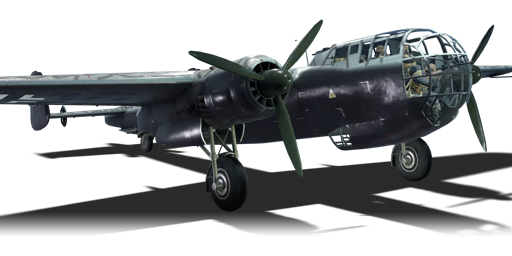


The Dornier 217 K-1 was a German WWII era medium bomber, developed from the previous Do 217 E medium bomber series. Unlike the previous Do 217 E, the Do 217 K-1 nose and cockpit was redesigned and aerodynamically streamlined, resulting in lower drag and higher speed. The crew of five was sitting inside the new fully glazed canopy. Compared to the Do 217 E the defensive armament was redesigned as the forward firing 7,92 mm MG 15 machine gun was replaced by twin MG 81 7,92 mm machine gun and the rear facing MG 15s were replaced by a single mounted MG 81. The offensive armament was removed. Maximum bombload of 4000 kg of bombs either in bomb bay or on external racks under the wings remained unchanged, although a single SC 1800 bomb could now be carried inside the bomb bay. The first Do 217 K left the factory in September 1942 and served throught the war as night bombers and against enemy shipping.
The Do 217 K-1 was introduced in Update 1.29 together with the other planes of the Dornier 217 family. The Do 217 is faster than most of other bombers it will meet in battle, being capable of taking out up to four bombing points when utilizing the Flamm C250 incendiary bombs or up to four bases utilizing the four SC 1000 bombs, depending on the maximal battle rating of the said match. Do 217 K is also very capable CAS due to its heavy bomb load and the powerful SC 1800 bomb containing 1000 kg of TNT eq. and 30 metres wide destruction radius. Do 217 can also be used in naval battles as it comes equipped with a pair of F5W torpedoes with 3 km range and 300 kg TNT eq. However these might prove hard to use as the Dornier have to slow down to sub 301 km/h making it an easy target for the naval gunners. Despite being a bomber, the Dornier is also quite maneuverable with maximal structural limit being 700 km/h, rivaling fighters such as Bf 109, making the Dornier be able to run away in dive from opponents such as Spitfires or Yaks.
flaps
flaps
flaps
brake
| Belt | Belt filling | Armor penetration (mm) at a distance: | |||||
|---|---|---|---|---|---|---|---|
| 10 m | 100 m | 500 m | 1000 m | 1500 m | 2000 m | ||
| IT/AP-I/IAI/AP-I | 19 | 16 | 8 | 4 | 2 | 1 | |
| AP-T/AP-T/AP-T/IAI | 19 | 16 | 8 | 4 | 2 | 1 | |
| Belt | Belt filling | Armor penetration (mm) at a distance: | |||||
|---|---|---|---|---|---|---|---|
| 10 m | 100 m | 500 m | 1000 m | 1500 m | 2000 m | ||
| AP-T/Ball/Ball/AP-I/AI | 9 | 8 | 6 | 3 | 0 | 0 | |
| AP/AP/AP/AP-T | 13 | 12 | 7 | 3 | 2 | 0 | |
| AP-I/AP-T/AP-I/AP-T | 9 | 8 | 6 | 3 | 0 | 0 | |
| Belt | Belt filling | Armor penetration (mm) at a distance: | |||||
|---|---|---|---|---|---|---|---|
| 10 m | 100 m | 500 m | 1000 m | 1500 m | 2000 m | ||
| AP-T/Ball/Ball/AP-I/AI | 9 | 8 | 6 | 3 | 0 | 0 | |
| AP/AP/AP/AP-T | 13 | 12 | 7 | 3 | 2 | 0 | |
| AP-I/AP-T/AP-I/AP-T | 9 | 8 | 6 | 3 | 0 | 0 | |
| Name | Weight | Slot | ||||||
|---|---|---|---|---|---|---|---|---|
| 1,000 kg |  |  | ||||||
| 936 kg | 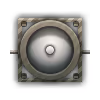 |  | ||||||
| 4 × | 1,000 kg | 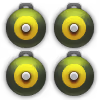 | ||||||
| 28 × | 1,400 kg | 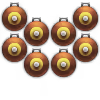 | ||||||
| 8 × | 2,000 kg | 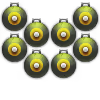 | ||||||
| 4 × | 2,000 kg | 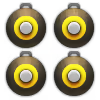 | ||||||
| 2 × | 2,000 kg | 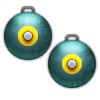 | ||||||
| 1,832 kg | 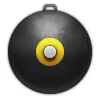 | |||||||
| 8 × | 880 kg | 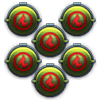 | ||||||
| 4 × | 900 kg |  | ||||||












Flight performance | |
|---|---|
Survivability |
|---|
Weaponry | ||
|---|---|---|